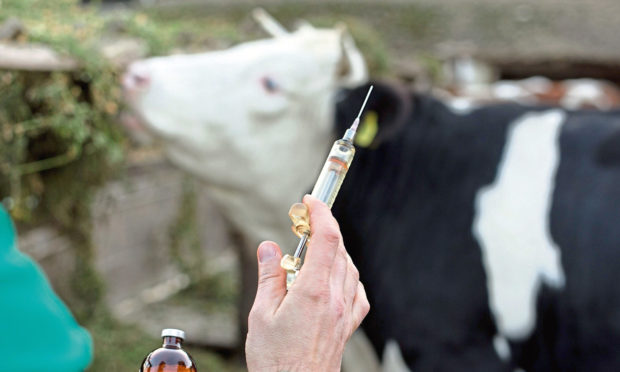UK livestock farmers have been praised for reducing their use of antibiotics over the last three years – but are now faced with meeting tighter targets by 2024.
Figures just released by the Veterinary Medicine Directorate (VMD) show sales of antibiotics used to treat UK farm animals in 2019 fell by half since 2017, and producers in the UK now have the fifth-lowest usage in Europe, with only Nordic countries achieving lower rates.
However, new goals have been set across the aquaculture, pigs, poultry and ruminant sectors in a report by the Responsible Use of Medicines in Agriculture (RUMA) alliance which has worked alongside vets and farmers to set achievable targets.
RUMA chair, Cat McLaughlin, said 2017’s targets – particularly for reducing the use of the highest-priority critically important antibiotics (HP-CIAs) – had been achieved in the face of some challenging external conditions, and she indicated data would be central to making progress.
“Most sectors are now capturing data on antibiotic use across 90% or more of their sector which has been a key part of the success,” she said.
“Even where usage data is lacking but good sales data are available, for example in cattle and sheep, sizable reductions have been achieved especially in sales of HP-CIAs.”
With the need for clearer information to get a picture of antibiotic use in the cattle and sheep sectors, the 2024 targets will involve collecting data into a new centralised AHDB Medicine Hub for ruminants.
And while specific reduction goals have not been set for beef and sheep, the aim is for dairy and calf rearing to secure reductions in use of 15% and 25% respectively across the national herd by 2024 as more data becomes available.
RUMA made it clear there will also be a focus on disease prevention as well as herd and flock health planning.
In the pig sector there are plans to decrease antibiotic use by a further 30% by 2020. To help achieve that goal, the sector is promoting best-practice guidelines to reduce post-weaning diarrhoea, a common cause of antibiotic use.
Other measures will include identifying farmers who use high levels of antibiotics and supporting them to lower their usage.
The poultry meat, hens and salmon sectors have opted to hold their targets at current levels.
VMD chief executive Professor Peter Borriello said the UK livestock sectors had already made good progress.
“The ambition now outlined in this report, alongside the proactive, holistic approaches and the focus on behaviour change principles, gives me every confidence that they will once again succeed,” he said.
All four of the UK’s chief vets welcomed the initiatives, which include plans to improve farmer and vet training and the creation of a network of Farm Vet Champions which will identify and help persistently high users in order to improve their management practices, and to monitor health and welfare.










